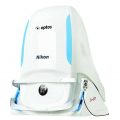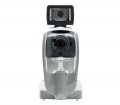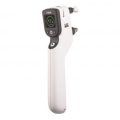-
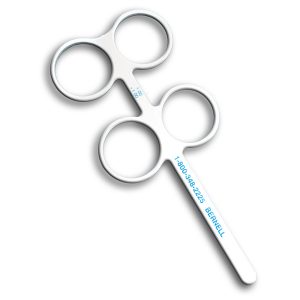 Test and train for accommodative facility, accommodative rock, positive/negative relative accommodation and convergence and fusional convergence reserves. May delay bifocal use with some early presbyopes. Assists in hyperopia screening and lens demonstrations. Durable, white plastic holds shape under low heat for lens insertion. Powers listed on handle. One pair plus; one pair minus. Select from +/- 0.25 to 4.00 diopters in 0.25 increments. Item #: BC1270+
Test and train for accommodative facility, accommodative rock, positive/negative relative accommodation and convergence and fusional convergence reserves. May delay bifocal use with some early presbyopes. Assists in hyperopia screening and lens demonstrations. Durable, white plastic holds shape under low heat for lens insertion. Powers listed on handle. One pair plus; one pair minus. Select from +/- 0.25 to 4.00 diopters in 0.25 increments. Item #: BC1270+ -
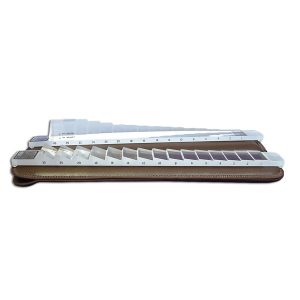 Set Includes Vertical prism bar with the following powers: 0.5, 1, 1.5, 2, 2.5 & 3 Horizontal prism bar with the following powers: 1, 3, 5, 10, 15 & 20 Item #: ACPS12
Set Includes Vertical prism bar with the following powers: 0.5, 1, 1.5, 2, 2.5 & 3 Horizontal prism bar with the following powers: 1, 3, 5, 10, 15 & 20 Item #: ACPS12 -
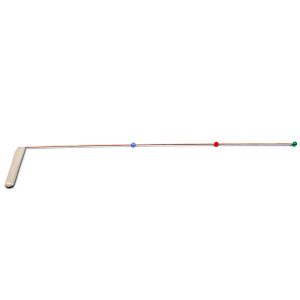 Copper Rod Ideal home training device for non-strabismics, esotropes with near centration point, and patients with other binocular vision problems. Three movable plastic beads on hand-held copper rod allows extensions of physiological diplopia techniques from 2" to 20'. Item #: BC1091
Copper Rod Ideal home training device for non-strabismics, esotropes with near centration point, and patients with other binocular vision problems. Three movable plastic beads on hand-held copper rod allows extensions of physiological diplopia techniques from 2" to 20'. Item #: BC1091 -
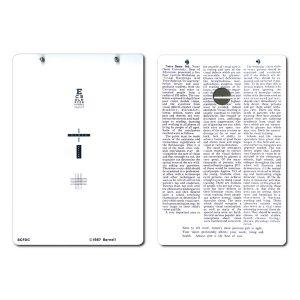 Variable slide adjust to determine fixation disparity or may be used with hand held prisms. Designed for phoroptor use. The card comes with a label which may be placed over the prism diopter scale for an additional scale in degrees. Reverse side of card includes reduced Snellen, fusional target and cross cylinder targets. 5-1/2" x 8" card and polarized goggle. Item #: BCFDC
Variable slide adjust to determine fixation disparity or may be used with hand held prisms. Designed for phoroptor use. The card comes with a label which may be placed over the prism diopter scale for an additional scale in degrees. Reverse side of card includes reduced Snellen, fusional target and cross cylinder targets. 5-1/2" x 8" card and polarized goggle. Item #: BCFDC -
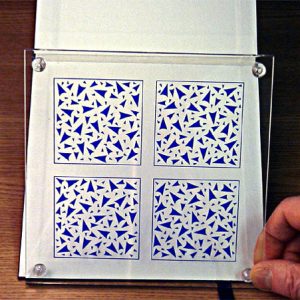 All Frisby Stereo Test Present "real depth" objects viewed with natural vision: not testing glasses are required. Each plate has four random-patten squares, with a circle of pattern elements, lying in depth relative to its surround. The depth effect is due to the circle and its surround being printed on opposite sides of the plate. The purpose of the Frisby Screening Stereo Test - Single Plate, is to demonstrate the presence of stereopsis.
All Frisby Stereo Test Present "real depth" objects viewed with natural vision: not testing glasses are required. Each plate has four random-patten squares, with a circle of pattern elements, lying in depth relative to its surround. The depth effect is due to the circle and its surround being printed on opposite sides of the plate. The purpose of the Frisby Screening Stereo Test - Single Plate, is to demonstrate the presence of stereopsis. -
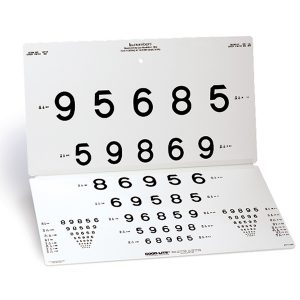 This test is designed for vision screening at schools and assessment of vision of children with special needs beginning with age of 5 years. Proportionally spaced (logMAR); line sizes range from 20/200 to 20/8 (6/60 to 6/2.4) equivalent, 0.10 to 2.50. Has hole for hanging on the wall. 18" x 20" (45.7 cm x 50.8 cm). Folds to 18" x 10" (45.7 cm x 25.4 cm).
This test is designed for vision screening at schools and assessment of vision of children with special needs beginning with age of 5 years. Proportionally spaced (logMAR); line sizes range from 20/200 to 20/8 (6/60 to 6/2.4) equivalent, 0.10 to 2.50. Has hole for hanging on the wall. 18" x 20" (45.7 cm x 50.8 cm). Folds to 18" x 10" (45.7 cm x 25.4 cm). -
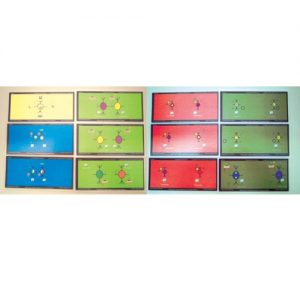 Aperture Rule™ Set (12 Stereoscope sized cards) These cares are more complex and require more detail demand. They build flexibility, resiliency, attention to detail and reduction of visual fatigue. These cards contain large quantities of details and build large ranges of fusion (leading to high amounts of prism diopters of 'Base Out' and 'Base In' fusion ranges) 12 Cards
Aperture Rule™ Set (12 Stereoscope sized cards) These cares are more complex and require more detail demand. They build flexibility, resiliency, attention to detail and reduction of visual fatigue. These cards contain large quantities of details and build large ranges of fusion (leading to high amounts of prism diopters of 'Base Out' and 'Base In' fusion ranges) 12 Cards -
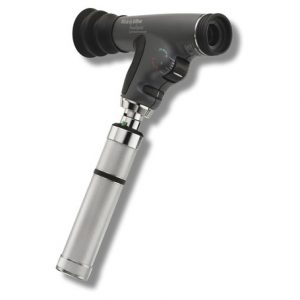
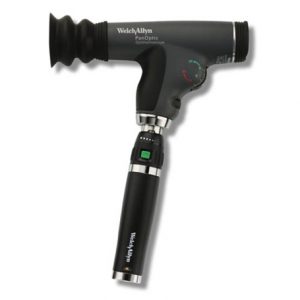 Our revolutionary PanOptic Ophthalmoscope addresses the fundamental challenge in ophthalmoscopy—to get a good view of the fundus in order to make a sufficient assessment. Patented Axial PointSource™ Optics make it easy to enter undilated pupils, offering a 25º field of view, resulting in a view of the fundus that's 5X greater than you see with a standard ophthalmoscope in an undilated eye. Direct viewing of the fundus through the PanOptic provides better images of the retinal changes caused by hypertension, diabetic retinopathy, glaucoma, and papilledema to enable clinicians to make these diagnoses earlier.
Our revolutionary PanOptic Ophthalmoscope addresses the fundamental challenge in ophthalmoscopy—to get a good view of the fundus in order to make a sufficient assessment. Patented Axial PointSource™ Optics make it easy to enter undilated pupils, offering a 25º field of view, resulting in a view of the fundus that's 5X greater than you see with a standard ophthalmoscope in an undilated eye. Direct viewing of the fundus through the PanOptic provides better images of the retinal changes caused by hypertension, diabetic retinopathy, glaucoma, and papilledema to enable clinicians to make these diagnoses earlier. -
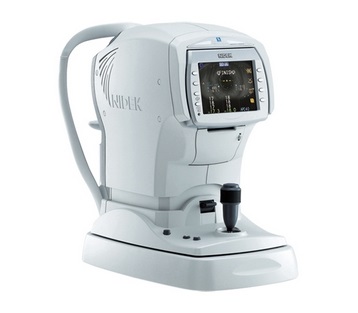
- Softer and Quiter Air Puff
- 3-D Auto Tracking, Auto Shot, and Auto Complete
- IOP Compensation by Corneal Thickness
- Attractive Tiltable 5.7-inch Color LCD
- Motorized Chinrest
- Patient Safety
- Printer with Easy Loading & Auto Detachment
-
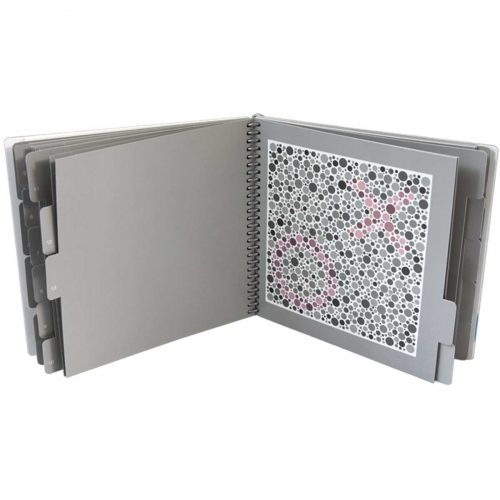 730006 The HRR (Hardy Rand and Rittler) Standard Pseudoisochromatic Test, 4th Edition provides several very important features to provide the most advanced color vision test available: congenital and acquired testing, identification of the type of defect, and diagnosis of the extent of the defect as well as quick positive classification of normals. The HRR employs a sophisticated test strategy that virtually eliminates the potential for memorization and malingering. The figures used by the HRR Pseudoisochromatic Plates are independent of language and suitable for both adults and children.
730006 The HRR (Hardy Rand and Rittler) Standard Pseudoisochromatic Test, 4th Edition provides several very important features to provide the most advanced color vision test available: congenital and acquired testing, identification of the type of defect, and diagnosis of the extent of the defect as well as quick positive classification of normals. The HRR employs a sophisticated test strategy that virtually eliminates the potential for memorization and malingering. The figures used by the HRR Pseudoisochromatic Plates are independent of language and suitable for both adults and children. -
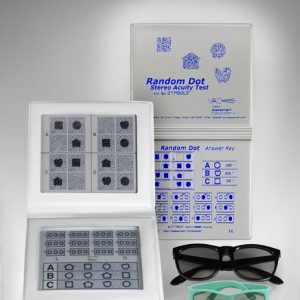 Designed to rapidly test for amblyopia and strabismus in early and non-readers and non-verbal children & adults. Expanded Random Dot LEA Symbols Test (500, 250, 125, 63 seconds of arc). Graded circle test now down to 12.5 seconds with no monocular clues. New improved booklet has answer key on back cover and includes polarized viewers.
Designed to rapidly test for amblyopia and strabismus in early and non-readers and non-verbal children & adults. Expanded Random Dot LEA Symbols Test (500, 250, 125, 63 seconds of arc). Graded circle test now down to 12.5 seconds with no monocular clues. New improved booklet has answer key on back cover and includes polarized viewers.- Expanded Random Dot Lea Symbols Test
- Graded circle test now down to 12.5 seconds
- No monocular clues with NEW technology
- New improved booklet
- Answer key on back cover
- Includes both adult and pediatric polarized viewers
-
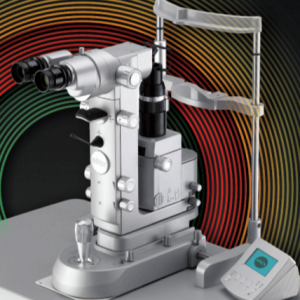
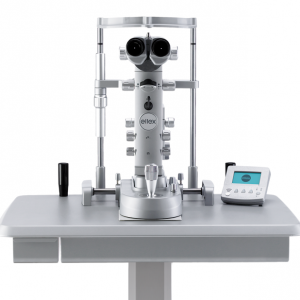
 Integre PRO's high-power yellow-red configuration delivers the full treatment spectrum of tradition three-color lasers in a slimline laser/ slit lamp design - re-defining multi-color laser technology.
Integre PRO's high-power yellow-red configuration delivers the full treatment spectrum of tradition three-color lasers in a slimline laser/ slit lamp design - re-defining multi-color laser technology.
Better Diagnosis and Treatment All-In-One
The all-in-one laser/slit lamp design of Integre Pro™ features a purpose-built slit lamp optimized for use in the posterior segment. Not only does this provide better depth perception, but it also offers optimum illumination of the fundus and a wider peripheral view. Additionally, Integre Pro’s treatment laser delivers a uniform energy distribution across the full diameter of the spot, from the beginning to the end of exposure – ensuring consistently better performance in the treatment of retinal disease.Clinical Versatility
Integre Pro™ can be configured with up to two wavelengths in order to best meet your clinical requirements. Choose from a combination of 561nm yellow, 670 nm red or 532nm green, including: 1. yellow-red configuration (561 nm and 670 nm) 2. green-red configuration (532 nm and 670 nm) 3. green configuration (532 nm) 4. yellow configuration (561 nm)Designed to Maximize Your Workflow
Unlike other photocoagulator systems, which require an external dichroic or fixed mirror in order to connect the laser to the slit lamp, Integre Pro’s unique, integrated laser/slit lamp design channels the laser directly through the slit lamp optics. The end result is better visualization and optimal illumination. In addition, this integrated design minimizes system downtime, because there are no exposed fiber optic or electrical cables.

